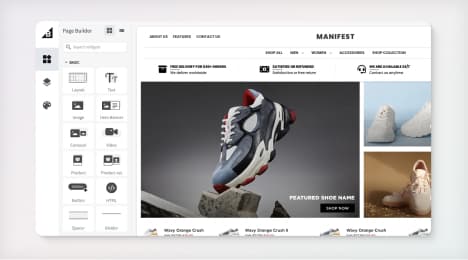
Watch Our Product Tour
See how BigCommerce helps you build and manage your online store with ease.
- Ecommerce Insights

6 Key Steps to Launch Your Online Store
Explore our Launch Foundations series to get your BigCommerce store up and running quickly.
BigCommerce helps growing businesses, enterprise brands, and everything in-between sell more online.
Why is mobile key to email marketing?
Mobile is key to email marketing because smartphones are quickly becoming the No. 1 way people access the Web. According to the Pew Research Center, 64 percent of American adults own a smartphone, and 63 percent of adult cell users use their phones to go online. It's worth noting that a whopping 34 percent of Internet users go online mostly through their phones, rather than using a desktop or laptop computer (1). And for a small number of phone-dependent Internet users, accessing the Web only happens through their smartphones.
For online retailers, that means mobile is increasingly where customers are likely to interact with emails from your store. It's no longer a satellite platform for engaging with customers—it's becoming the platform for reaching many customers. According to email analytics firm Litmus, the percentage of emails opened on mobile devices jumped from 8 percent in 2011 to 53 percent in 2014—a fivefold increase. At the same time, the number of emails opened through the desktop mail program Outlook, for instance, decreased by 33 percent (2).
More people are opening and interacting with email on their mobile devices than ever before, and it's a trend that shows no signs of slowing. In the 2015 State of Marketing survey from Salesforce, 20 percent of global marketers now say their primary revenue sources are directly linked to email (3). So everything from the email itself—including both content and design—as well as the app or Web pages those emails may push to must be designed with a mobile user in mind.
In terms of different types of email marketing, email newsletters and promotional campaigns are the most popular types, but mobile opt-ins have been shown to be the most effective (3). Gaining mobile opt-in means asking customers not just for their email addresses but also for their mobile phone numbers when you sign them up for marketing campaigns. You can then supplement emails with text messages or phone calls, virtually guaranteeing that you're able to reach and engage with your customers. For instance, if an email about a particular promotion goes unopened, the retailer could follow-up with a text message a few days later. Or if a member clicks through an email to the site but doesn't complete a purchase, the retailer could email an additional discount code to further encourage the successful conversion.
Optimizing for mobile
Using responsive design is the clearest way to better optimize mobile email marketing. Responsive design means not creating a one-size-fits-all format, but instead using a design that expands or contracts the layout automatically based on the type of mobile device that the customer is using. And a design that lets readers easily and intuitively interact with the email message and Web site will get the most engagement from customers. A few more best practices to keep in mind for mobile email marketing:
• Be choosy with images. Numerous large photos can easily double download time or require awkward zooming or scrolling for mobile users, making it more likely that customers will bounce from the message.
**• Make buttons easily tappable.**Unlike at a desktop where customers are navigating with a mouse, with a mobile device they'll be relying on a finger or thumb. Make the touch screen target size appropriately large, which might mean limiting the number of nearby buttons or links.
•Test drive your fonts. A small or ornate font size may read beautifully on the desktop where you write your email marketing materials, but if it's hard to see on a mobile device, users will have to zoom in to read it. If the experience becomes too frustrating, they'll likely bounce altogether. So test drive your font choice and size for readability on a few different types of mobile devices.
**• Keep the content short.**Mobile users are more likely to skim your message than settle in for a lengthy read, so save your longer messages for a blog post and aim to keep email content targeted and on-point.
• Stick to a single column. Interacting with a two-column or three-column design is cumbersome on most mobile devices, and customers might not have the patience to read the whole message or follow through on the call to action. Stick to a single column format instead to increase usability.
(1) Pew Research Center: Mobile Technology Fact Sheet: http://www.pewinternet.org/fact-sheets/mobile-technology-fact-sheet/ (2) Litmus: https://litmus.com/blog/53-of-emails-opened-on-mobile-outlook-opens-decr... (3) The State of Marketing: https://www.salesforce.com/blog/2015/01/2015-state-of-marketing.html
BigCommerce helps growing businesses, enterprise brands, and everything in-between sell more online.
Start growing your ecommerce business even faster.
High-volume or established business? Request a demo